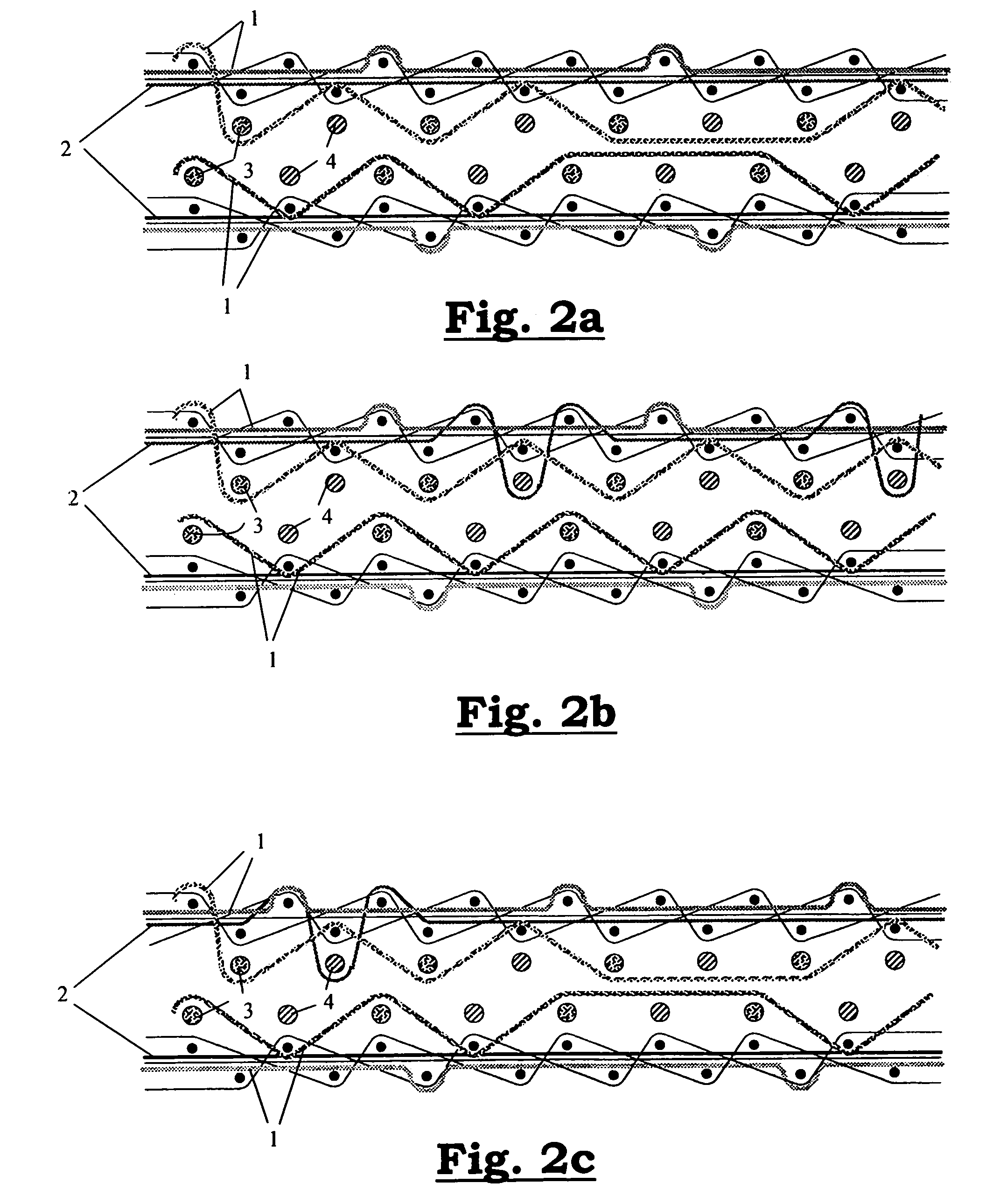Method for weaving fabrics with areas having a corded structure with a large variety of colour effects
a technology of fabric and corded structure, which is applied in the field of weaving a fabric with a corded structure, can solve the problems of limited number of pile warp yarns that may be used per reed dent or per warp system, limited colour effects which may be realised within such fabrics, and additional disadvantages of fabric with a cut pile, so as to achieve the effect of expanding the palette of colours and/or effects, reducing the number of piles, and reducing the number of cutting
- Summary
- Abstract
- Description
- Claims
- Application Information
AI Technical Summary
Benefits of technology
Problems solved by technology
Method used
Image
Examples
Embodiment Construction
[0061]In order to add more than one colour as a weft effect across the lateral width (weft direction), successive series of at least two different pattern-weft yarns (3, 4) are inserted in the method according to the invention, at least one pattern-warp yarn in each series running essentially above the warp yarns in a first part of its trajectory and forming the pattern, and in a second part of its trajectory being covered by pile warp yarns in an essentially cord-forming manner, so that a predetermined pattern or design is formed.
[0062]In a fabric, different areas having a corded structure are created. The said areas are a part of the fabric having a well-defined dimension in the warp direction of the fabric in accordance with the distance across the weft yarns of one (or several) series of weft yarns on the one hand, and a well-defined dimension in the weft direction in accordance with part of the width of the weaving machine on the other hand. Depending on the method applied, it ...
PUM
 Login to View More
Login to View More Abstract
Description
Claims
Application Information
 Login to View More
Login to View More - R&D
- Intellectual Property
- Life Sciences
- Materials
- Tech Scout
- Unparalleled Data Quality
- Higher Quality Content
- 60% Fewer Hallucinations
Browse by: Latest US Patents, China's latest patents, Technical Efficacy Thesaurus, Application Domain, Technology Topic, Popular Technical Reports.
© 2025 PatSnap. All rights reserved.Legal|Privacy policy|Modern Slavery Act Transparency Statement|Sitemap|About US| Contact US: help@patsnap.com



